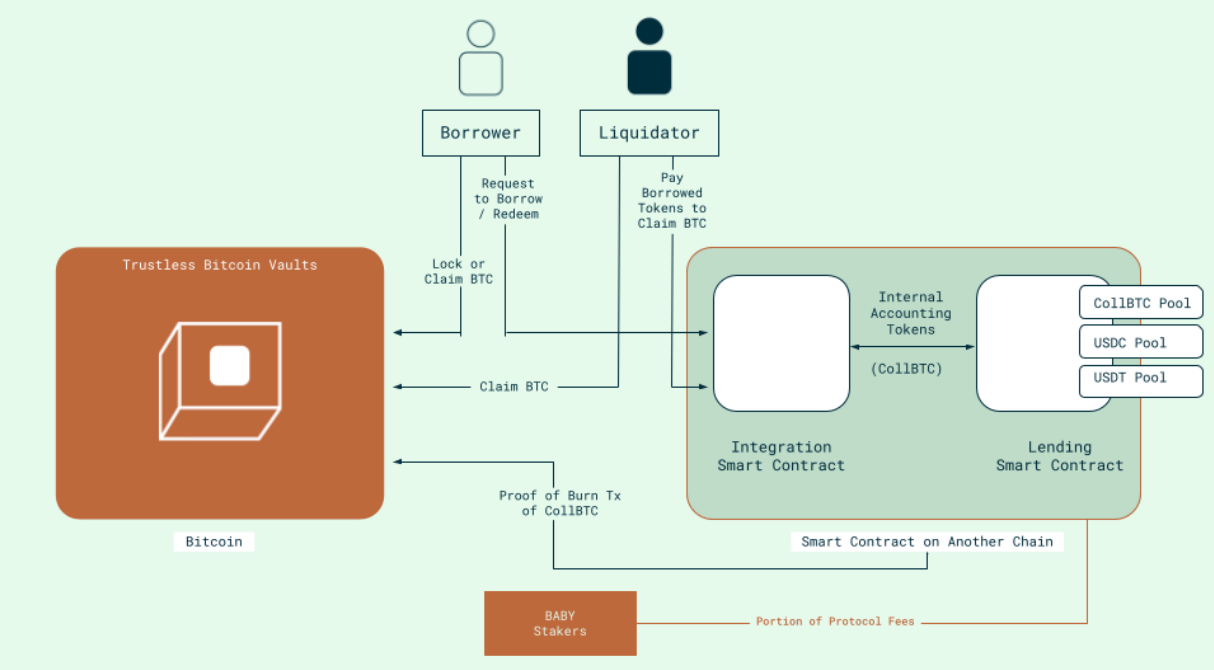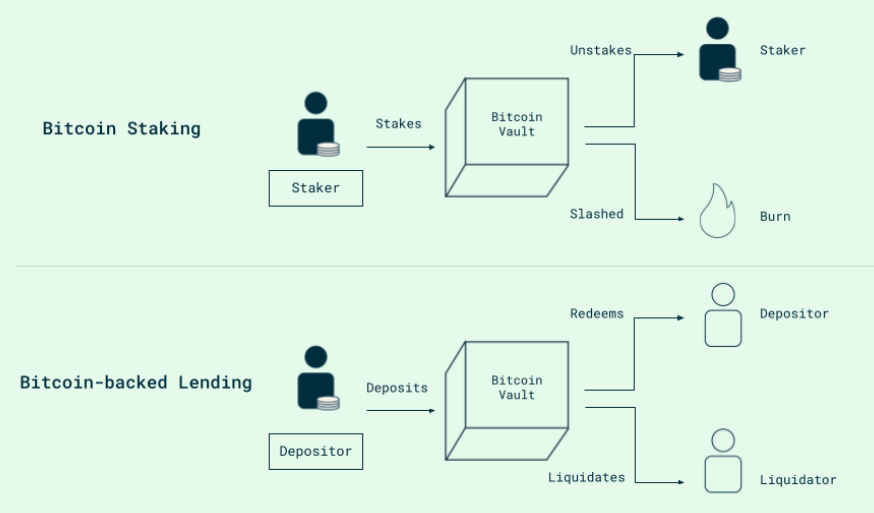Babylon Labs’ proof-of-concept uses BitVM3 to enable native Bitcoin collateral on Ethereum by locking BTC in Bitcoin-native vaults and verifying vault state on Ethereum via cryptographic proofs, allowing trust-minimized borrowing without a custodial bridge.
-
Native Bitcoin collateral on Ethereum via BitVM3-based vaults
-
VaultBTC bridges BTC to Ethereum as an intermediate token verified by a Bitcoin light client and cryptographic proofs.
-
Experimental liquidity is minimal (market liquidity reported at $14 in USDC); liquidation depends on whitelisted liquidators and external price oracles.
Native Bitcoin collateral on Ethereum: Babylon Labs’ BitVM3 vaults enable trust-minimized BTC borrowing on Ethereum — read the risks and how VaultBTC works. (COINOTAG)
Babylon Labs says it has built a system using BitVM3 that allows native Bitcoin to be used as trustless collateral for borrowing on Ethereum, but its trustless design raises questions.
Published: Oct 16, 2025. Updated: Oct 16, 2025. Author/Organization: COINOTAG
How does native Bitcoin collateral on Ethereum work?
Native Bitcoin collateral on Ethereum operates by locking BTC in per-user Bitcoin vaults that require cryptographic proofs of external smart contract state (verified on Bitcoin) to authorize withdrawals; an Ethereum smart contract then validates the vault via a Bitcoin light client and recognizes the collateral on-chain. This design removes a centralized custodian from the bridging step while relying on cryptographic verification and off-chain actor roles for liquidation and monitoring.
What is VaultBTC and how is it implemented?
Babylon Labs describes VaultBTC as an intermediate, non-fungible asset that represents a specific Bitcoin vault and interfaces with onchain lending protocols. The system uses BitVM3 — a Bitcoin smart contract verification framework — to lock native BTC in per-user vaults. Withdrawals (redemption or liquidation) require cryptographic proofs tied to external smart contract state, which are verified on Bitcoin and then recognized by an Ethereum-side light client and collateral accounting contract.

A schematic of the Bitcoin vault-based lending system. Source: Babylon Labs
Babylon Labs co-founder and Stanford professor David Tse publicly stated the team built a proof-of-concept allowing native BTC “to be used trustlessly as collateral to borrow on Ethereum for the first time.” The white paper released by Babylon Labs in August 2025 outlines the vault architecture, the BitVM3 verification flow, and how VaultBTC interacts with lending markets.
An experimental VaultBTC token has been integrated into the onchain lending protocol Morpho for testing, though total market liquidity remains extremely low (reported at $14 in USDC at the time of reporting). Babylon’s white paper and Tse’s statements are the primary technical sources for the design; oracle providers and other ecosystem participants were approached for comment but had not responded by publication.
How trustless is VaultBTC?
Parts of the system are cryptographically trust-minimized, but key components introduce human or permissioned roles. Liquidations rely on a set of whitelisted liquidators who monitor vault state and price feeds. While the vault design prevents theft of locked BTC, the liquidation process assumes correct behavior from a sufficient number of liquidators and accurate, timely oracle data.

Bitcoin vault liquidation schematic. Source: Babylon Labs
The white paper notes co-signing measures and permissioned liquidator lists intended to reduce censorship and misbehavior risk, but these measures do not fully eliminate trust assumptions. Liquidation decisions inherit the accuracy, timeliness, and censorship-resistance properties of the price oracle. Oracle providers mentioned in public discussion include Band Protocol and Pyth Network (not linked), both of which were not available for comment by publication.
What really changes for borrowers and lenders?
Babylon Labs frames the practical benefit with a simple scenario: Bob locks 1 BTC in a trust-minimized vault to borrow $50,000 in stablecoin on Ethereum from Larry. If BTC falls below the liquidation threshold, whitelisted liquidators can trigger vault liquidation; if Bob repays on time, he regains the BTC. Compared with custodial wrapping models like WBTC, this approach seeks to remove centralized custodianship and the associated counterparty risks.
Where custodial wrapped tokens require trust in a custodian’s honesty and solvency, the vault design relies on cryptographic spending conditions and cross-chain verification. The trade-off is that liquidation and price-reference roles still impose operational trust assumptions that must be managed through careful governance and robust oracle design.
Frequently Asked Questions
Can VaultBTC be stolen if liquidators misbehave?
No. VaultBTC’s underlying Bitcoin locking mechanism uses pre-signed conditional transactions and cryptographic proofs, preventing direct theft of locked BTC. However, misbehavior by liquidators can lead to incorrect liquidations or censorship, which creates economic and operational risk rather than direct asset theft.
Is using native Bitcoin as collateral safe for retail borrowers?
Using native BTC in this model reduces certain counterparty risks compared with custodial wrapped tokens, but it introduces dependency on whitelisted liquidators and oracle integrity. Retail users should consider these operational risks and the experimental status of VaultBTC before participating.
Key Takeaways
- Trust-minimized bridging: VaultBTC uses BitVM3 to lock native BTC and provide cryptographic proofs to Ethereum.
- Operational trust remains: Liquidation and oracle components introduce permissioned roles and external dependencies.
- Early-stage experiment: Integration into lending markets is experimental with minimal liquidity; users should await broader audits and ecosystem testing.
Conclusion
Babylon Labs’ VaultBTC demonstrates a technical pathway for native Bitcoin collateral on Ethereum by combining BitVM3 vaults, Bitcoin light-client verification, and intermediate VaultBTC tokens that interface with Ethereum lending protocols. While the architecture reduces custodial counterparty risk, it retains operational trust assumptions around liquidators and oracles. Continued testing, security audits, and transparent governance will determine whether this approach can scale into a reliable bridge for institutional and retail lending markets. For now, the proof-of-concept advances interoperability but remains experimental—monitor updates from Babylon Labs and related technical publications.
